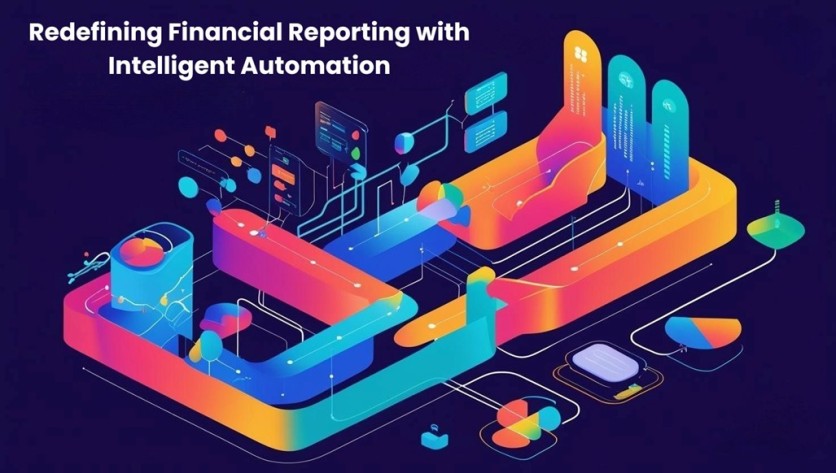
In a compelling contribution to the discourse on financial technology, expert Siva Prasad Marri outlines the disruptive impact of Artificial Intelligence and Machine Learning on financial statement generation. An academic and innovator, he presents a transformative vision where algorithms and automation redefine the financial back office. His insights highlight the shift from traditional rule-based systems to adaptive, intelligent frameworks capable of driving real-time decision-making and enhanced operational agility.
From Laborious to Lightning-Fast
For decades, financial statement preparation has been a tedious and error-prone endeavor. Manual data entry, reconciliation, and reporting demanded extensive time and resources. The infusion of AI into this space brings a dramatic shift: manual tasks are being replaced with automated data extraction, enabling near real-time processing. AI-integrated financial systems can now reduce manual processing time by up to 80%, while improving the speed of month-end closings by 40%. This newfound speed is not simply about convenience. By reducing the lag between data collection and reporting, businesses gain timely insights that enhance decision-making and agility. Moreover, AI enhances data accuracy and minimizes human error, ensuring greater financial integrity.
Smarter Data Handling through AI Integration
AI-powered data aggregation is at the core of this innovation. Advanced Extract-Transform-Load (ETL) systems unify data from multiple sources into a coherent ecosystem. These systems do more than automate entry; they optimize data flow, validate information in real time, and transform static numbers into dynamic insight. Such intelligent platforms offer multidimensional analysis capabilities that traditional tools could never support. Financial teams now explore cost-saving opportunities and scenario outcomes with unprecedented clarity. Moreover, AI reconciliation engines reduce discrepancies by as much as 45% and cut verification times by up to 75%, a transformation that allows finance professionals to pivot from operational tasks to strategic analysis.
Detecting the Invisible: AI's Error Radar
Accuracy has long been the Achilles' heel of financial reporting. AI is changing that. Through machine learning models trained to detect anomalies, systems can identify suspicious patterns with up to 90% accuracy, vastly superior to conventional rule-based systems. These intelligent agents continuously learn and adapt, monitoring thousands of transactions and recognizing deviations, even those shaped by seasonality or historical nuance. Visual enhancements further boost productivity. Conditional formatting based on detected anomalies introduces intuitive cues, color-coded alerts, and dynamic dashboards that accelerate financial reviews and deepen the understanding of underlying issues. This synergy of machine learning and visualization reduces false positives and sharpens the focus on genuine irregularities.
Query Optimization: From Bottlenecks to Breakthroughs
Traditional financial systems struggle with complex queries, often resulting in slow and inefficient reporting. AI-driven query optimization provides a powerful solution by using self-learning algorithms to restructure database queries, reducing processing time by up to 75%. Technologies like smart indexing and parallel computing enable real-time access to vast datasets, transforming reporting from batch-based cycles to dynamic analytics. These advancements not only improve speed but also offer financial benefits; organizations report 30–40% reductions in infrastructure costs. Additionally, the return on AI investment is swift, with some companies achieving full cost recovery within 14 months. This shift positions businesses to make faster, data-driven decisions, enhancing both operational efficiency and strategic planning.
A New Era of Visualization and Foresight
Where past financial reporting looked backward, AI tools now empower a forward-looking perspective. Interactive dashboards and multidimensional visualizations present financial data in digestible formats, increasing insight identification rates by up to 70%. These dashboards accommodate both technical analysts and non-financial stakeholders, widening engagement and promoting informed collaboration across departments. Even more impactful are the predictive analytics capabilities. AI tools analyze historic and real-time data to forecast future outcomes, enhancing forecast accuracy by 25–30%. These systems detect potential risks like cash flow issues weeks before they materialize, enabling preemptive strategies that protect organizational health. The automation of financial statement generation through AI and ML is more than an operational upgrade; it is a reimagining of the finance function itself. From smarter data ingestion and anomaly detection to lightning-fast query processing and predictive modeling, these innovations elevate financial reporting to a strategic advantage.
In conclusion, as Siva Prasad Marri emphasizes, organizations that embrace these technologies not only improve their reporting accuracy and speed but also transition from data custodians to proactive business enablers. This paradigm shift positions finance teams at the forefront of digital transformation, redefining their role in a landscape driven by intelligence, insight, and innovation.
ⓒ 2025 TECHTIMES.com All rights reserved. Do not reproduce without permission.




